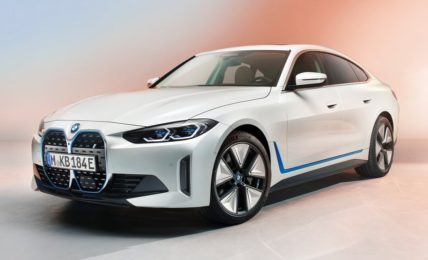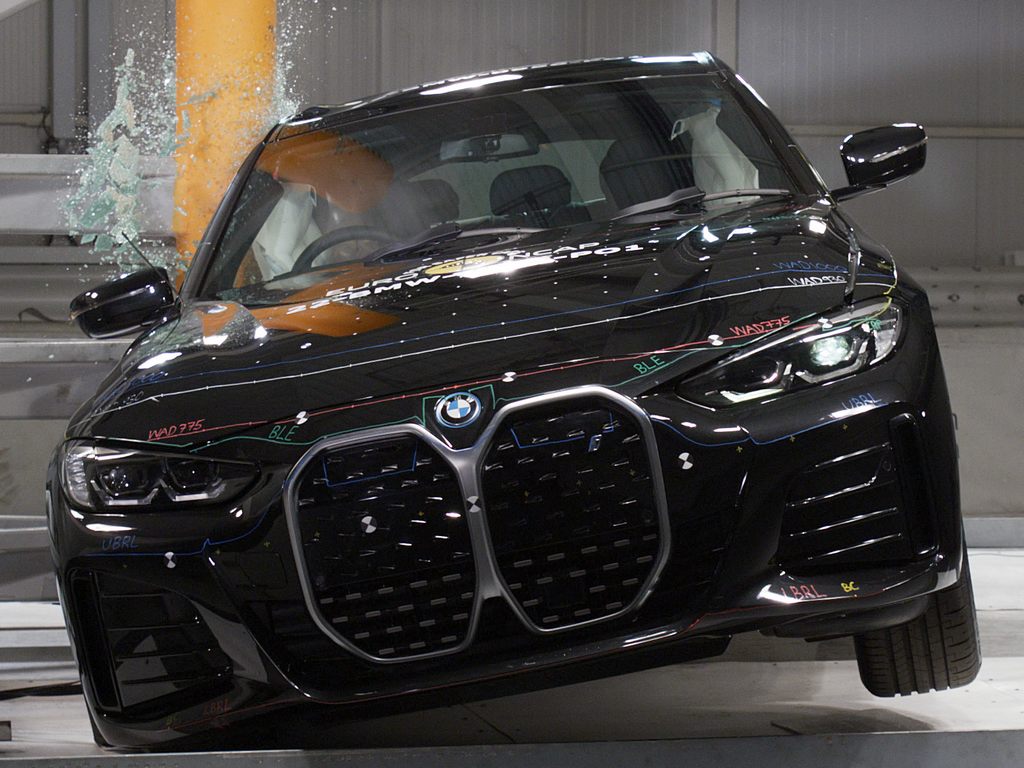
The 4 star rating bagged by BMW i4 in Euro NCAP tests is mainly due to not so good performance in control of excursion
The recently launched electric luxury sedan of BMW, the i4, has secured a rather modest 4 stars in the recently concluded Euro NCAP crash tests. This comes as rude shock as the luxury sedan is no cheap by any means and should have easily secured full 5 stars.
Coming to the results, the passenger compartment of the i4 remained stable in the frontal offset test and dummy numbers demonstrated good protection for the knees and femurs of both the driver and passenger.
BMW demonstrated that a similar level of protection would be provided to occupants of different sizes and to those sitting in different positions.
Analysis of the deceleration of the impact trolley during the test, and analysis of the deformable barrier after the test, revealed that the i4 would be a moderately benign impact partner in a frontal collision.
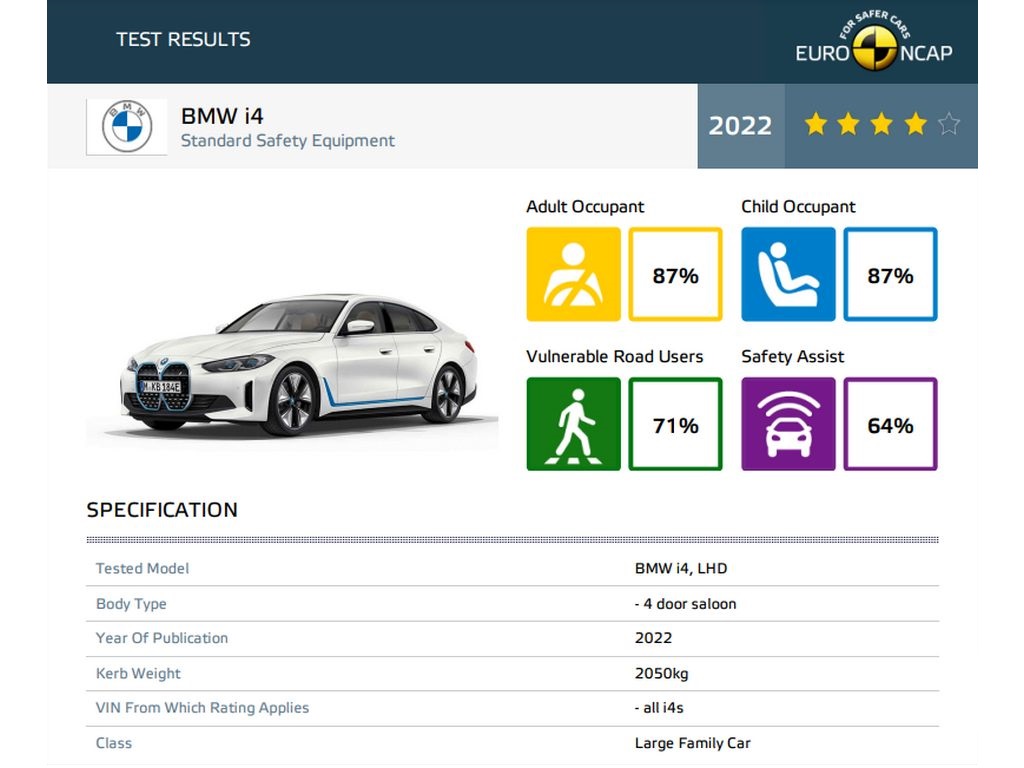
In the full width rigid-barrier impact, protection of all critical body areas was good or adequate, for both the driver and rear seat passenger. In both the side barrier test and the more severe side pole impact, protection of all critical body areas was good.
Control of excursion was found to be adequate. The i4 does not have a counter-measure to mitigate against occupant to occupant injuries in such impacts. Tests on the front seats and head restraints demonstrated good protection against whiplash injuries.
A geometric analysis of the rear seats also indicated good whiplash protection. The i4 has an advanced eCall system which alerts the emergency services in the event of a crash but no system to apply the brakes after an impact to avoid secondary collisions.
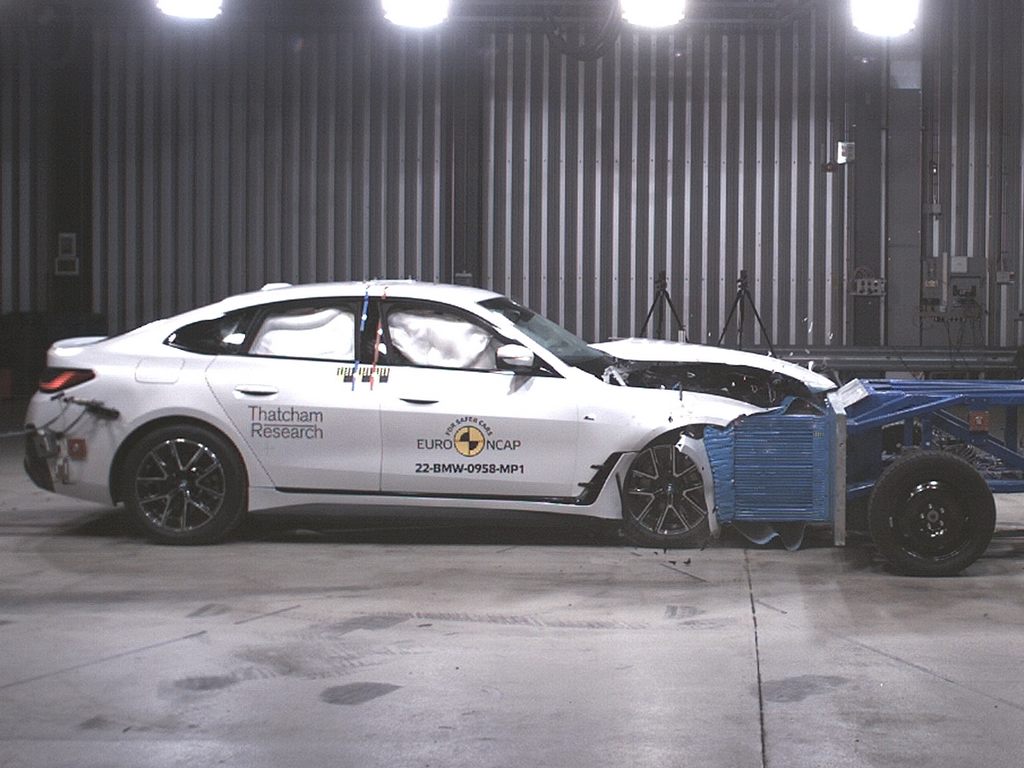
In both the frontal offset and the side impact barrier tests, protection of all critical body areas was good for all critical body areas, for both the 6 and 10 year dummy, and maximum points were scored for this part of the assessment.
The front passenger airbag can be disabled to allow a reward-facing child restraint to be used in that seating position. Clear information is provided to the driver regarding the status of the airbag and the system was rewarded.
The i4 has an ‘active’ bonnet. Sensors in the bumper detect when a pedestrian has been hit and actuators lift the bonnet surface to provide greater clearance to the hard structures in the engine compartment.
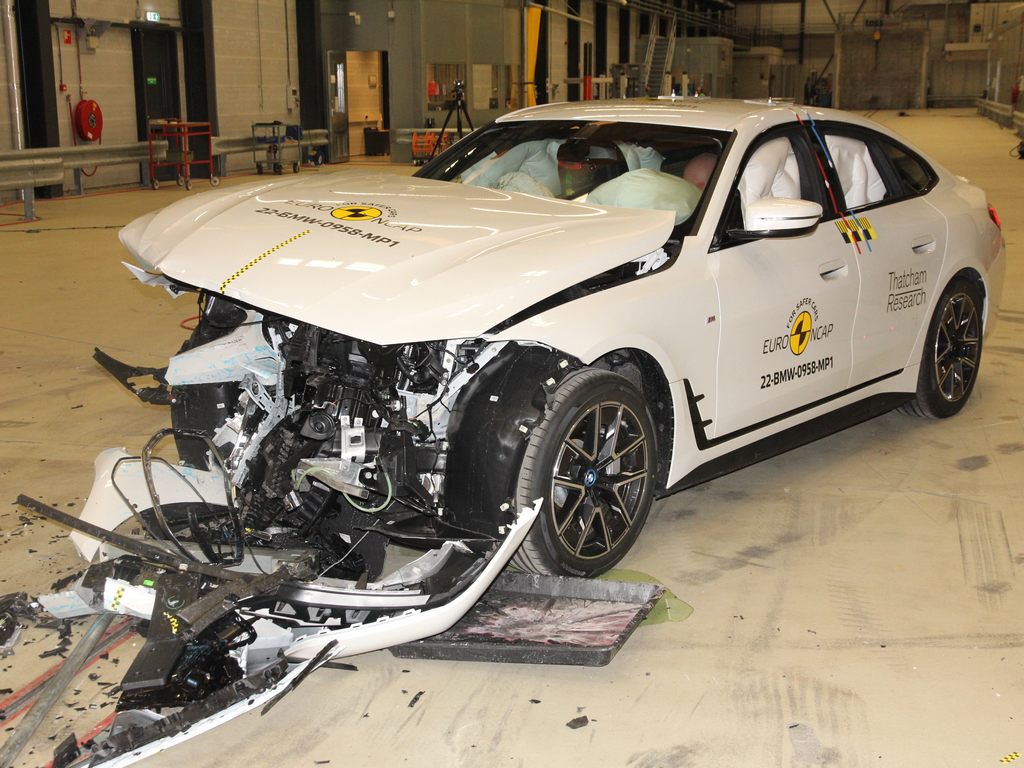
BMW showed that the system operated robustly for different pedestrian statures and over a wide range of speeds. Accordingly, the bonnet was tested in the raised, ‘deployed’ position and the protection provided was almost completely good or adequate.
The bumper provided good protection to pedestrians’ legs at all test locations but protection of the pelvis was largely poor. The autonomous emergency braking (AEB) system of the i4 can detect vulnerable road users, as well as other vehicles.
The AEB system performed adequately in tests of its response to other vehicles, with impacts avoided or mitigated in many test scenarios. A seatbelt reminder system is standard and the car is equipped with a system which monitors steering inputs.
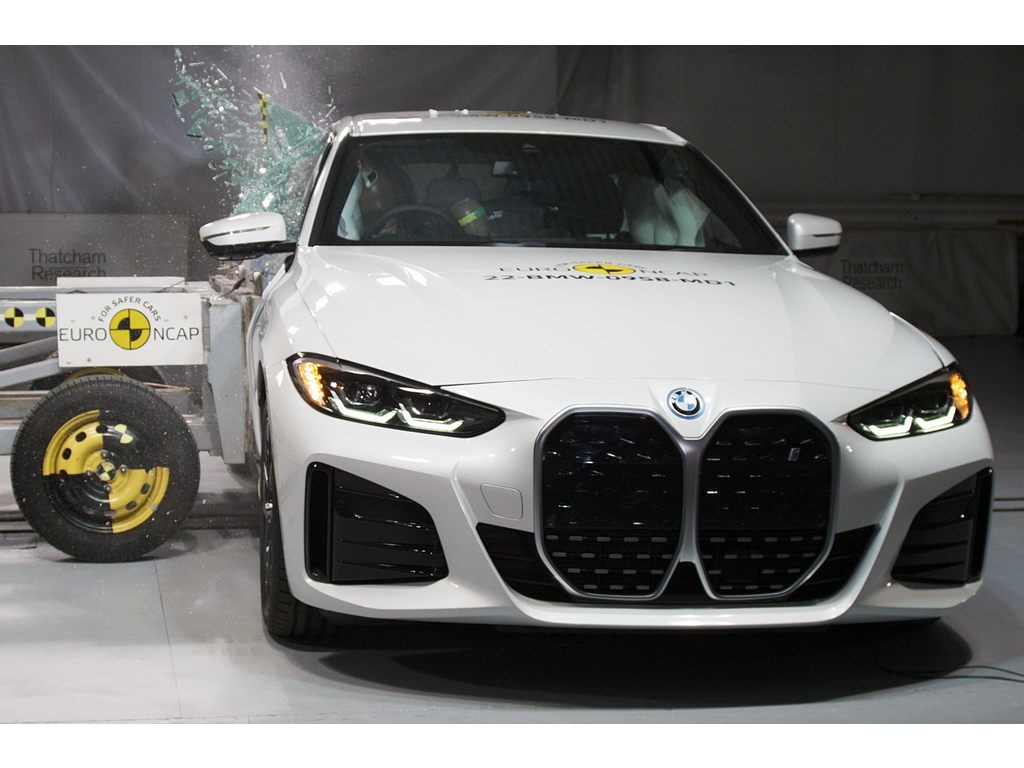
It issues a warning when a pattern characteristic of drowsy or impaired driving is detected. A combined camera/navigation system identified the local speed limit and provides the information to the driver, allowing the speed limiter to be set accordingly.
If the car is drifting out of lane, a lane keep assist system gently corrects the vehicle’s path. The system also intervenes in some more critical situations, to avoid road departure for example.
In India, the BMW i4 competes with the likes of the recently launched Kia EV6 GT Line and the upcoming Volvo XC40 Recharge.


